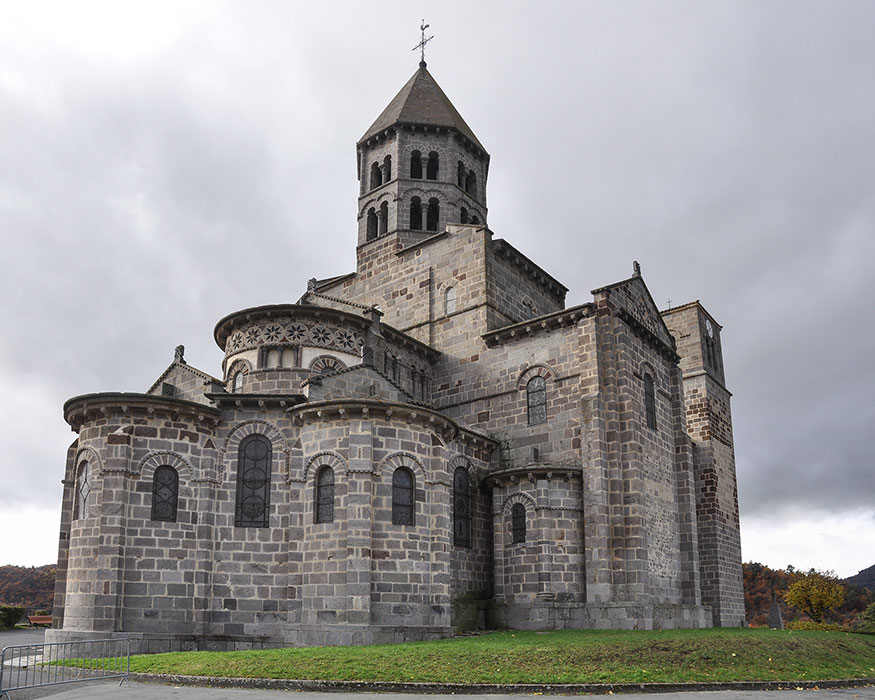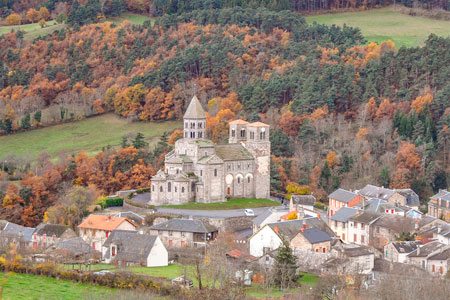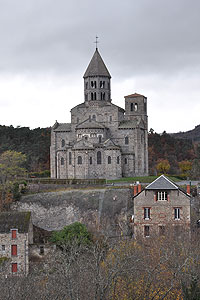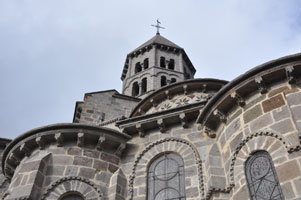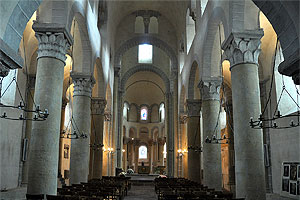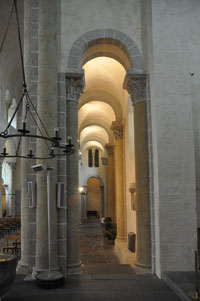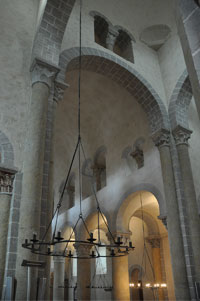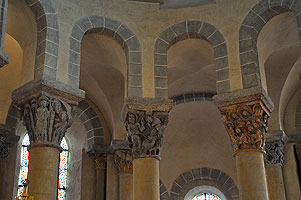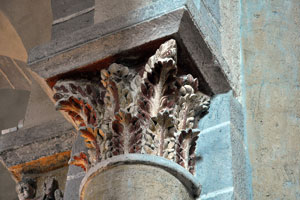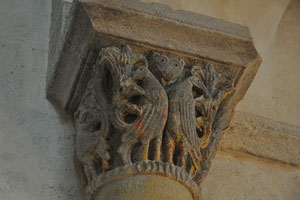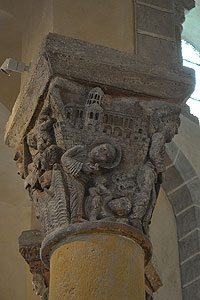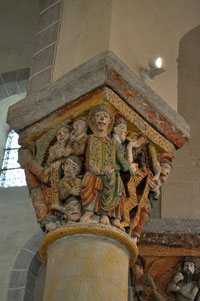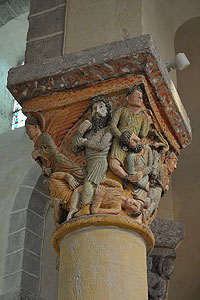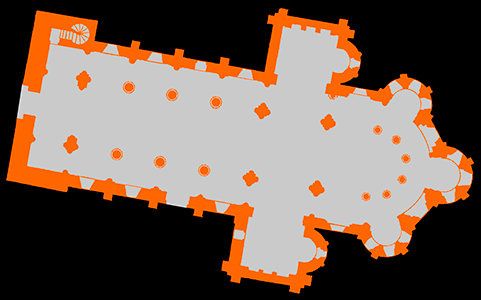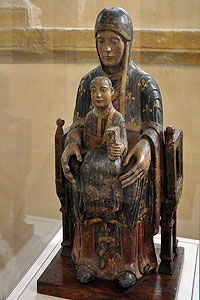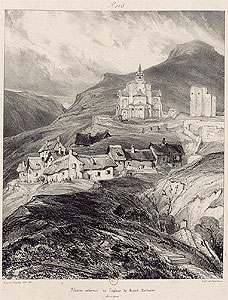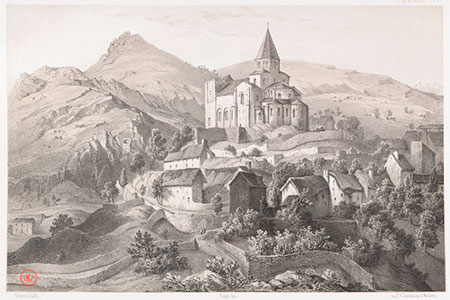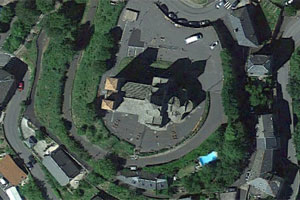Saint Nectarius, a disciple of Saint Austromoine, was one of the evangelisers of Auvergne in the 3rd century. At his death he was buried on Mount Cornadore, where a church would later be erected in his honour. By 1178 this site already belonged to the Abbey of La Chaise-Dieu (Haute-Loire), which had established a priory there.
In 1146 Saint-Nectaire was not yet among the possessions of La Chaise-Dieu; it was Count William VII of Auvergne (c. 1145-1169) who donated the church to that monastery. Although the details of the construction of the present church are not precisely known, it was built at that time, probably through the initiative of the count himself or perhaps by the community of La Chaise-Dieu. The church suffered greatly during the Revolution, when it lost its bell tower and was badly damaged.
Worship was restored at Saint-Nectaire in 1804, and the church underwent major restoration in 1876. Those works involved extensive rebuilding and decorative additions, with little regard for its medieval fabric, yet they resulted in a church of remarkable beauty, especially for its silhouette, standing high and isolated on a hilltop. The building is essentially Romanesque from the 12th century, with three aisles of five bays, the first of which forms a narthex crowned by two towers. It also has a transept, above the crossing of which rises a tower, and in its arms open two apsidioles. The chevet consists of the chancel, surrounded by an ambulatory with three radial chapels.
According to tradition, Nectarius was born in Byzantium into a wealthy family; upon the death of his parents, he was unjustly dispossessed of his fortune and moved to Rome, where he came into contact with Christianity and was baptised, changing his name from Hypatius to Nectarius. A legendary version claims that he was baptised by Saint Peter and even recounts an episode in which he died at Sutri (Viterbo) and was restored to life through a miracle of the apostle. Together with Anthemius, Marius, Sirenatus and Mammet he accompanied Saint Austromoine —one of the Seven Apostles of Gaul— in his evangelising mission in Auvergne, as related by Saint Gregory of Tours.
Traditionally this episode has been placed in the time of Pope Fabian (236-250), so Nectarius would have lived in the 3rd century, though it is probably more accurate to date it to the 4th century. Nectarius took charge of the evangelisation of the Limagne (in today’s Puy-de-Dôme) with the help of the saints Baudimius and Auditor. Several miracles are attributed to him both in Rome and in Auvergne, including the resurrection of Brandule. Upon his death he was buried on Mount Cornadore, where he had lived for many years; the site became a place of pilgrimage, and it is here that the Romanesque church now stands, once the seat of the Benedictine priory of Saint-Nectaire.
- BEAUNIER, Dom (1912). Abbayes et prieurés de l'ancienne France. Vol. 5. Bourges. Abbaye de Ligugé
- BRANCHE, Jacques (1652). La vie des saincts et sainctes d'Auvergne, et de Velay, vol. 2. Le Puy: Guynard
- CRAPLET, Bernard (1972). Auvergne romane. La nuit des temps, 2. Zodiaque
- DE RÉSIE, Comte (1855). Histoire de l'église d'Auvergne, depuis saint Austremoine jusqu’a l’année 1560. Clemont-Ferrand: L. Catholique
- DESHOULIÈRES, M. (1925). Saint-Nectaire. Congrès Archéologique de France. 87 ss. París: Picard
- FORESTIER, François (1878). L'église et la paroisse de Saint-Nectaire. Clermont-Ferrand: Thibaud
- GUÉRIN, Paul (1888). Les Petits Bollandistes. Vies des saints. Vol. 13. París: Bloud et Barral
- JUSTEL, Christofle (1645). Histoire généalogique de la maison d'Auvergne. París: Du Puy
- MICHEL, Adolphe (1843). L'ancienne Auvergne et le Velay. Histoire, archéologie, moeurs, topographie IV. Atlas. Moulins
- RANQUET, Henry du (1897). L'église de Saint-Nectaire. Congrès archéologique de France, 52 ss. Société française d'archéologie
- ROCHIAS, G. (1909). Les chapiteaux de l'église de Saint-Nectaire. Bulletin Monumental, vol. 73
